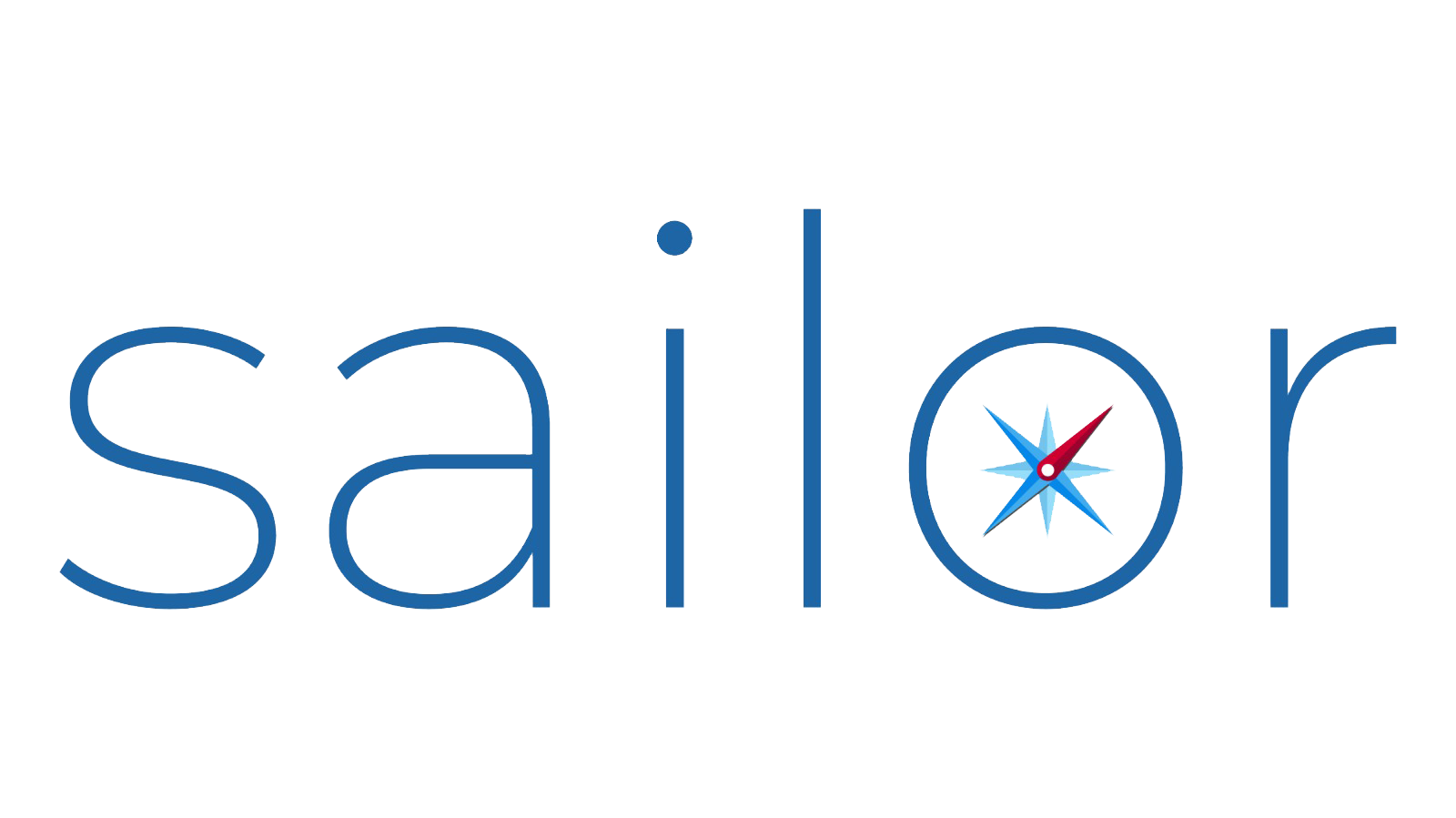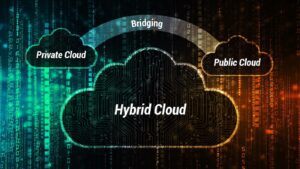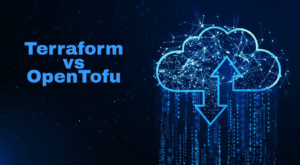Securing Secrets Management for Hybrid and Multi-Cloud Infrastructure
As infrastructure and application environments become increasingly complex spanning multiple clouds and on-prem data centers, managing access credentials and secrets poses an escalating security challenge. Administrators need to track hundreds of API keys, database passwords, SSH keys and certificates across heterogenous platforms while ensuring encryption, access controls and routine rotations.
Native cloud provider secrets tools like AWS Secrets Manager and Azure Key Vault simplify management to some extent within individual cloud platforms. But adopting multi-cloud or hybrid infrastructure requires consistent abstractions. This is where Infrastructure-as-Code approaches provide compelling value.
The Multi-Cloud Secret Management Dilemma
Early approaches to securing infrastructure credentials involved embedding passwords directly in scripts or reusing identical shared secrets widely across teams to simplify administration. But these practices pose unacceptable risks especially for external facing infrastructure components.
As cloud platforms gained dominance, dedicated secrets management services emerged from AWS, Azure and GCP – AWS Secrets Manager, Azure Key Vault and GCP Secret Manager. While helping overcome immediate challenges, increased cloud adoption also exacerbated longer term complexity:
- No central visibility or control: With no unified pane of glass into secrets across hybrid or multi-cloud environments, governance becomes fragmented across disparate point tools. This leads to credential sprawl with keys duplicated across platforms, and security teams lacking insight into which assets need rotation.
- Policy inconsistencies: Individual administrators end up defining localized conventions per platform rather than enforcing global enterprise standards. One team may rotate IAM keys every 2 days while another resets VM admin passwords annually. Partial visibility furthers policy drift.
- Challenging auditability: Providing reports showing all certificates nearing expiry or accounts with overdue rotations involves heavy lifting. Disjointed management interfaces make generating unified views into compliance health difficult without custom engineering.
- Reinforcing vendor lock-in: Tight coupling of secrets to specific cloud vendor capabilities through proprietary interfaces hinders workload portability. Organizations lose leverage to negotiate pricing or adopt best-of-breed infrastructure services across clouds. Migrating applications becomes exponentially harder.
This dilemma arises from securing infrastructure secrets in isolation from the resources they connect while workloads targeted for deployment may span environments. Cloud vendor secrets managers focus narrowly on their individual platforms rather than business applications requirements. A fundamental paradigm shift is needed in multi-cloud secrets orchestration- one rooted in abstraction.
The Path Forward – Unified Secrets Abstraction
Infrastructure-as-code paradigms provides compelling ways forward. Expanding cloud-agnostic infrastructure automation approaches pioneered by Terraform to also orchestrate secrets management offers an enterprise-class solution.
Some key ways this addresses existing gaps:
- Unified identity and access policies not fragmented across cloud native interfaces
- Global secret rotation rules tied to central corporate security standards
- Holistic compliance validation against frameworks like SOC2
- Reduced coupling to any one platform through compatibility across all major cloud providers.
Let’s analyze how Terraform addresses existing secrets management dilemmas in multi-cloud environments.Orchestrating Secrets with Infrastructure-as-Code
Infrastructure-as-Code (IaC) brings codification, reusable components and policy-driven management to provisioning and configuration. Expanding this approach to also orchestrate secrets provides similar advantages:
- Unified identity and access: Federate administrators from central auth providers rather than per platform IAM inconsistencies.
- Simplified secret rotations: Whole stack refreshes based on central policy rather than reconfiguring individually.
- Compliance reporting: Continually assess posture against frameworks like SOC2 and ISO27001.
- Abstraction to prevent lock-in: Reduce coupling to any one platform’s proprietary interfaces.
Here is sample Terraform code to demonstrate IaC secrets orchestration:
Copy code
# Azure Redis Cacherotated password
resource "random_password" "redis_pass" {
length = 16
special = false
keepers {
rotate = time_rotating.45d.id
}
}
# Azure Key Vault
resource “azurerm_key_vault” “vault” {
name = “RedisVault”
}
resource “azurerm_key_vault_secret” “redis_secret” {
name = “RedisPassword”
value = random_password.redis_pass.result
key_vault_id = azurerm_key_vault.vault.id
}
# Rotation trigger
resource "time_rotating" "45d" {
rotation_days = 45
}
This allows centralized credential management across Azure Cache instances deployed across multiple regions and cloud platforms rather than eventual consistency across fragmented tool sets.
Enterprise-Grade Secrets Management
Expanding on these patterns with reusable libraries allows organizations to industrialize secrets management fulfilling complex compliance, security and audit requirements while retaining flexibility across diverse infrastructure:
- Broad platform support: Orchestrate secrects consistently across major public clouds, private data centers, VM, container and serverless platforms.
- Automated rotations: Ensure credentials like keys and passwords refreshed globally on schedules rather than risky manual processes.
- Compliance validation: Continually assess secret configurations against frameworks like PCI DSS, SOC2 and ISO27001.
- Change tracking: Provide full audit trails for secret access, rotation and modifications.
In essence, applying fundamentals pioneered in policy-as-code, GitOps and compliance-as-code for application security to infrastructure management drives the next evolution in multi-cloud secrets orchestration – one based on unified abstractions rather than fragmented per platform tool sets.
If you are looking for an easy way to manage and automate your cloud infrastructure, Sailor Cloud is a good option to consider. To learn more about Sailor Cloud, please visit the Sailor Cloud website: https://www.sailorcloud.io/
automate your cloud infrastructure, Sailor Cloud is a good option to consider. To learn more about Sailor Cloud, please visit the Sailor Cloud website: https://www.sailorcloud.io/
External Resources:
- Terraform Blog: Managing Secrets with Terraform by HashiCorp https://www.hashicorp.com/blog/managing-secrets-with-terraform
2.Tutorial: Manage Azure Key Vault Secrets with Terraform https://learn.hashicorp.com/tutorials/terraform/azure-key-vault-secret?in=terraform/secrets-management
- Security at Scale: Secrets Management on AWS using Terraform https://www.anchore.com/blog/aws-secrets-management-at-scale-with-terraform/
- Terraform Rotation Policies for Secrets Management https://www.terraform.io/cli/commands/providers/template#example-rotation-secret






